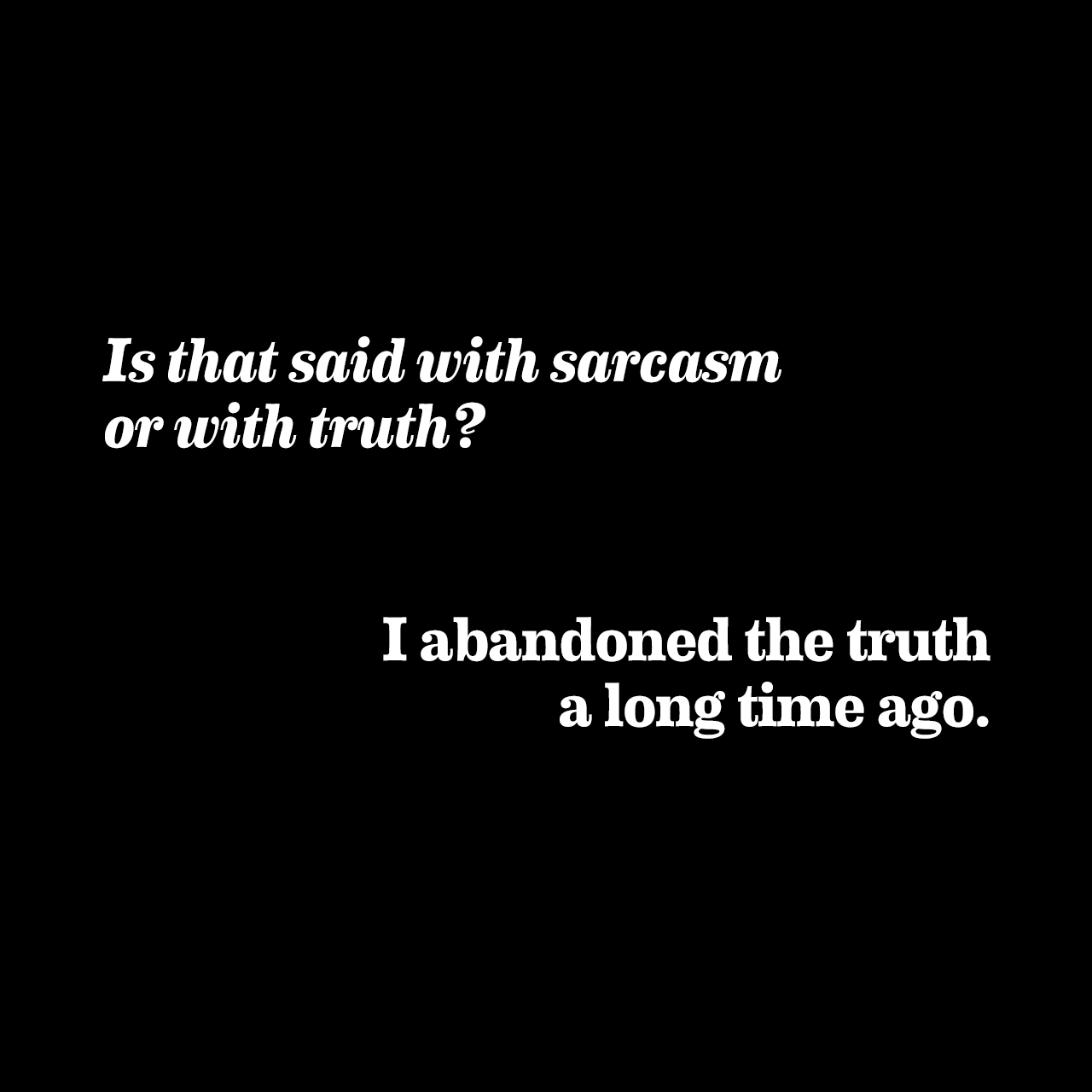Rogue One: A Star Wars Story
Here’s the official trailer for Rogue One: A Star Wars Story:
I’m enjoying this new tradition of putting out better movies than the shitty prequels George Lucas made (granted, the bar was pretty low).
Here’s the official trailer for Rogue One: A Star Wars Story:
I’m enjoying this new tradition of putting out better movies than the shitty prequels George Lucas made (granted, the bar was pretty low).
Ars Technica: Kansas couple sues IP mapping firm for turning their life into a “digital hell”:
Ever since James and Theresa Arnold moved into their rented 623-acre farm in Butler County, Kansas, in March 2011, they have seen “countless” law enforcement officials and individuals turning up at their farm day and night looking for links to alleged theft and other supposed crime. All of these people are arriving because of a rounding error on a GPS location, which wrongly points people to their farm.
I love it: “because of a rounding error on a GPS location”
Oops.
This video made me smile.
It also made me think about how archaic the act of sticking out our hands to summon a vehicle is.
“Grandpa, what’s a taxi cab?”
“Oh they were these yellow automobiles, driven by humans, that would take you where ever you wanted to go in New York and you would get them to pick you up by standing in the road and sticking out your arm to hail one.”
“They didn’t drive themselves and you couldn’t use your neural chip to give it commands?”
“Nope.”
If she gets to pick her judges, nothing you can do, folks,” Mr. Trump said. He added: “Although the Second Amendment people — maybe there is, I don’t know.
Those words came out of Donald Trump’s mouth yesterday.
That’s not OK.

As of 11:25 AM today, August 2nd, 2016, here are screen grabs of FoxNews.com and NYDailyNews.com:


This is in light of Mike Pence breaking with Trump and endorsing Paul Ryan.
In 2015, Moleskine released a calendar app for iOS (yes, the company that makes notebooks and journals).
The app is called Timepage. I’ve been using it since it came out and it’s really good. As with all great design, it’s beautiful, but design is about how it works, not how it looks, and it works great. It much easier to use than Apple’s native Calendar app for iOS.
I’m not going to give a full breakdown of the app, I just want to highlight one detail I love. When you have no appointments on a day, instead of showing you nothing, it displays a historic event:

If you’re the kind of person searching for great calendar apps try it out, it’s $2.99 and if that’s too expensive for you, how about you skip your over-sugared and over-priced Starbucks latte.


Josh Marshall, the editor and publisher of Talking Points Memo, posted a great series of tweets delving into the mind of Donald Trump and what he could be expected to do if he faces defeat this fall.
1: Have given it a lot of thought. I think it’s possible. But I come at it from a slightly different POV. https://t.co/gGij7WnRd8
— Josh Marshall (@joshtpm)
2: If the race continues on its current trajectory. Trump may be looking at a situation like this by Sept. Sure he cld drop out and avoid ..
— Josh Marshall (@joshtpm)
3: humiliation. But he wldnt be avoiding it by much. He’d be the only major party candidate ever to simply up and leave the race because …
— Josh Marshall (@joshtpm)
4: he’s facing defeat. He’d become the biggest loser, in every way, in American history, though of course he’d try to spin it. The key …
— Josh Marshall (@joshtpm)
5: point is that this is someone has virtually no capacity to handle or tolerate loss or humiliation. And he’ll be facing the choice of …
— Josh Marshall (@joshtpm)
6: two extreme forms of it. It’s not just that Trump’s narcissism will make the injury more severe. The nature of his campaign will too.
— Josh Marshall (@joshtpm)
7: Pro-business economics wasn’t invalidated by Romney’s loss. He just loss. The premise of Trump’s campaign is himself and “winning.”
— Josh Marshall (@joshtpm)
8: As we’ve seen over the last three or four days, Trump doesn’t act well or safely in the face of extreme stress of narcissistic injury.
— Josh Marshall (@joshtpm)
9: So if the campaign proceeds on its current trajectory (not a certainty of course), the last 6 weeks of the campaign will be one of …
— Josh Marshall (@joshtpm)
10: extreme emotional volatility and increasingly erratic conduct. That’s a very dangerous set of circumstances regardless of whether …
— Josh Marshall (@joshtpm)
11: he chooses to bail out or see it through to the end. People like Trump grow more erratic and aggressive under mounting stress and …
— Josh Marshall (@joshtpm)
12: with unavenged narcissistic injuries. It’s not a pleasant scenario to contemplate. But it’s coming.
— Josh Marshall (@joshtpm)
What a crazy year 2016 is turning out to be.
It looks like Microsoft is kicking ass with their mobile phone division:
Microsoft is cutting 2,850 more jobs beyond the 1,850 that the company announced would be eliminated earlier this year. The new cuts will hit phone hardware and sales.
The entire computer world has moved to mobile, with everyone on either iOS or Android, while Microsoft is at the gate after the flight has taken off. They began efforts to reboot Windows Phone a few years after the iPhone came out (2008-ish), but as we can see by their job cuts in mobile, it has not been successful. If you look at any chart of mobile market share they rarely come up.
This failure in Microsoft’s mobile hardware efforts is interesting in light of the 300 million active devices that are (supposedly) running Windows 10 as of this past May.
Meanwhile, today is your last chance to get Windows 10 for free, because, you know, it’s that great that people will want to buy it tomorrow.

Taken from a great episode of Comedians in Cars Getting Coffee with John Oliver.
This is great. The theme song to my favorite NES game, Metroid, played by a Mariachi band:
They have a Kickstarter project for a second album they’re making, which I’m backing right now.
That title is a quote from a great profile over at The New York Times by Wil S. Hylton on one of my favorite artists of all time, Chuck Close. It’s titled, The Mysterious Metamorphosis of Chuck Close:
he has recently set about leaving much of his old life behind: filing for divorce from his wife, Leslie, after 43 years of marriage, disappearing for the winter to live virtually alone in a new apartment on Miami Beach and retreating from his summer friends to the crowded isolation of Long Beach.
His painting style has dramatically changed too:
It’s difficult to know how to describe that painting, or the series of new work it was part of, except to say that it was a radical departure from the last 20 years of his art. Gone were all the swoops and swirls that he typically paints into each square of the grid. In their place, he had filled each cell with just one or two predominant colors, creating a clunky digital effect like the graphics of a Commodore 64. The colors themselves were harsh and glaring, blinding pink and gleaming blue, while the face in the portrait — his face — was cleaved right down the middle, with one side of the canvas painted in different shades from the other. To the left, his skin was peach, his shirt deep red and the background mint green; to the right, his skin was pink, his shirt sapphire and the backdrop orange. There was a sea-green splotch hovering over his neck, with a long tail that poked into his nose, and one ear was radioactive yellow; the nose was honking blue.
The dude is getting old. Cut him some slack. The systems inside his body are shutting down, possibly including his brain. It’s called aging. To Close’s defense, “blinding pink and gleaming blue” sound like the colors he would see around him in Miami Beach.
This bit about Jeff Koons resonated with me:
In Long Beach, exile had the sound of summer, and I spent a few more days with Close, watching the tides roll out. We would sit at the long table on the middle floor, eating Indian takeout and discussing the commercial compromise made by artists who rely on assistants to make their work. “I look at my friend Jeff Koons, and I think, Why in God’s name does he want to do that?” Close said. “Why would he give up the fun part to become the C.E.O. of an art-manufacturing company?”
Seriously. Why would you give up the fun part? If I had to guess, I’d say Koons is more interested in being a businessman than being an artist.
The transformation in Close’s work reminds me of what happened to Willem De Kooning towards the end of his life. His works became more and more minimal to the point where they were barely recognizable as De Kooning paintings. There are allegations of De Kooning’s assistants taking away canvases when they considered them finished.
After reading the Close profile, Austin Kleon wondered how you tell the difference between symptoms of art-making and dementia. Great question. Sometimes it’s hard to tell.
I’ll say this: even if Close is in the early stages of Alzheimer’s or dementia, his work is still incredible. This isn’t a case where a once brilliant painter has forgotten his process and lost his craft and is finger painting (although Close could probably do a mean finger painting).
(Fifty-cent word from the Close profile: uroboric)